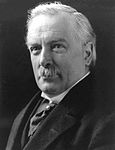
Back যুক্তরাজ্যের সাধারণ নির্বাচন, ১৯১৮ Bengali/Bangla Všeobecné volby ve Spojeném království 1918 Czech Etholiad cyffredinol y Deyrnas Unedig, 1918 Welsh Britische Unterhauswahl 1918 German Elecciones generales del Reino Unido de 1918 Spanish Élections générales britanniques de 1918 French הבחירות הכלליות בבריטניה 1918 HE Elezioni generali nel Regno Unito del 1918 Italian 1918年イギリス総選挙 Japanese 1918년 영국 총선 Korean
| |||||||||||||||||||||||||||||||||||||||||||||||||||||||||||||||||||||||||||||||||||||||||||||||||||||
All 707 seats in the House of Commons 354[a] seats needed for a majority | |||||||||||||||||||||||||||||||||||||||||||||||||||||||||||||||||||||||||||||||||||||||||||||||||||||
|---|---|---|---|---|---|---|---|---|---|---|---|---|---|---|---|---|---|---|---|---|---|---|---|---|---|---|---|---|---|---|---|---|---|---|---|---|---|---|---|---|---|---|---|---|---|---|---|---|---|---|---|---|---|---|---|---|---|---|---|---|---|---|---|---|---|---|---|---|---|---|---|---|---|---|---|---|---|---|---|---|---|---|---|---|---|---|---|---|---|---|---|---|---|---|---|---|---|---|---|---|---|
| Turnout | 57.2% ( | ||||||||||||||||||||||||||||||||||||||||||||||||||||||||||||||||||||||||||||||||||||||||||||||||||||
| |||||||||||||||||||||||||||||||||||||||||||||||||||||||||||||||||||||||||||||||||||||||||||||||||||||
 Colours denote the winning party | |||||||||||||||||||||||||||||||||||||||||||||||||||||||||||||||||||||||||||||||||||||||||||||||||||||
 Composition of the House of Commons after the 1918 general election | |||||||||||||||||||||||||||||||||||||||||||||||||||||||||||||||||||||||||||||||||||||||||||||||||||||
| |||||||||||||||||||||||||||||||||||||||||||||||||||||||||||||||||||||||||||||||||||||||||||||||||||||
The 1918 United Kingdom general election was called immediately after the Armistice with Germany which ended the First World War, and was held on Saturday, 14 December 1918. The governing coalition, under Prime Minister David Lloyd George, sent letters of endorsement to candidates who supported the coalition government. These were nicknamed "Coalition Coupons", and led to the election being known as the "coupon election". The result was a massive landslide in favour of the coalition, comprising primarily the Conservatives and Coalition Liberals, with massive losses for Liberals who were not endorsed.[2] Nearly all the Liberal MPs without coupons were defeated, including party leader H. H. Asquith.[3]
It was the first general election to include on a single day all eligible voters of the United Kingdom, although the vote count was delayed until 28 December so that the ballots cast by soldiers serving overseas could be included in the tallies.[4]
It resulted in a landslide victory for the coalition government of David Lloyd George, who had replaced H. H. Asquith as Prime Minister in December 1916. They were both Liberals, and continued to battle for control of the party, which was rapidly losing popular support, and never regained power.[5]
It was the first general election to be held after enactment of the Representation of the People Act 1918. It was thus the first election in which women over the age of 30 (with some property qualifications), and all men over the age of 21, could vote. Previously, all women and many poor men had been excluded from voting. Women generally supported the coalition candidates.[6][7]
It was the first parliamentary election in which women were able to stand as candidates, following the Parliament (Qualification of Women) Act 1918, believed to be one of the shortest Acts of Parliament ever given Royal Assent. The Act was passed shortly before Parliament was dissolved. It followed a report by Law Officers that the Great Reform Act 1832 had specified parliamentary candidates had to be male, and that the Representation of the People Act passed earlier in the year did not change that. One woman, Nina Boyle, had already presented herself for a by-election earlier in the year in Keighley, but had been turned down by the returning officer on technical grounds.[8]
Prior to this election the university constituency seats were re-allocated. Several seats were filled in multi-seat constituencies using STV.[9]
The election was also noted for the dramatic result in Ireland, which showed clear disapproval of government policy. The Irish Parliamentary Party were almost completely wiped out by the Irish republican party Sinn Féin, who vowed in their manifesto to establish an independent Irish Republic. They refused to take their seats in Westminster, instead forming a breakaway government and declaring Irish independence. The Irish War of Independence began soon after the election. Because of the resulting partition of Ireland, this was the last United Kingdom general election to include the entire island of Ireland.
- ^ "Government majority". Institute for Government. 20 December 2019.
- ^ McEwen 1962.
- ^ Ball, Stuart R. (1982). "Asquith's Decline and the General Election of 1918". Scottish Historical Review. 61 (171): 44–61.
- ^ McGill, Barry (1974). "Lloyd George's Timing of the 1918 Election". Journal of British Studies. 14 (1): 109–124. doi:10.1086/385668.
- ^ Adelman, Paul (2014). The decline of the Liberal Party 1910–1931.
- ^ Hilson, Mary (2001). "Women voters and the rhetoric of patriotism in the British general election of 1918". Women's History Review. 10 (2): 325–347. doi:10.1080/09612020100200284.
- ^ Thackeray, David (2010). "Home and politics: women and Conservative activism in early twentieth-century Britain". Journal of British Studies. 49 (4): 826–848, esp. p. 836. doi:10.1086/654913. PMID 20941876.
- ^ Hallam, David J. A (2018). Taking on the Men: the first women parliamentary candidates 1918. Studley. pp. 11–12.
- ^ Ratcliffe, Mike (28 January 2015). "The history of university representation". Wonkhe.
Cite error: There are <ref group=lower-alpha> tags or {{efn}} templates on this page, but the references will not show without a {{reflist|group=lower-alpha}} template or {{notelist}} template (see the help page).





